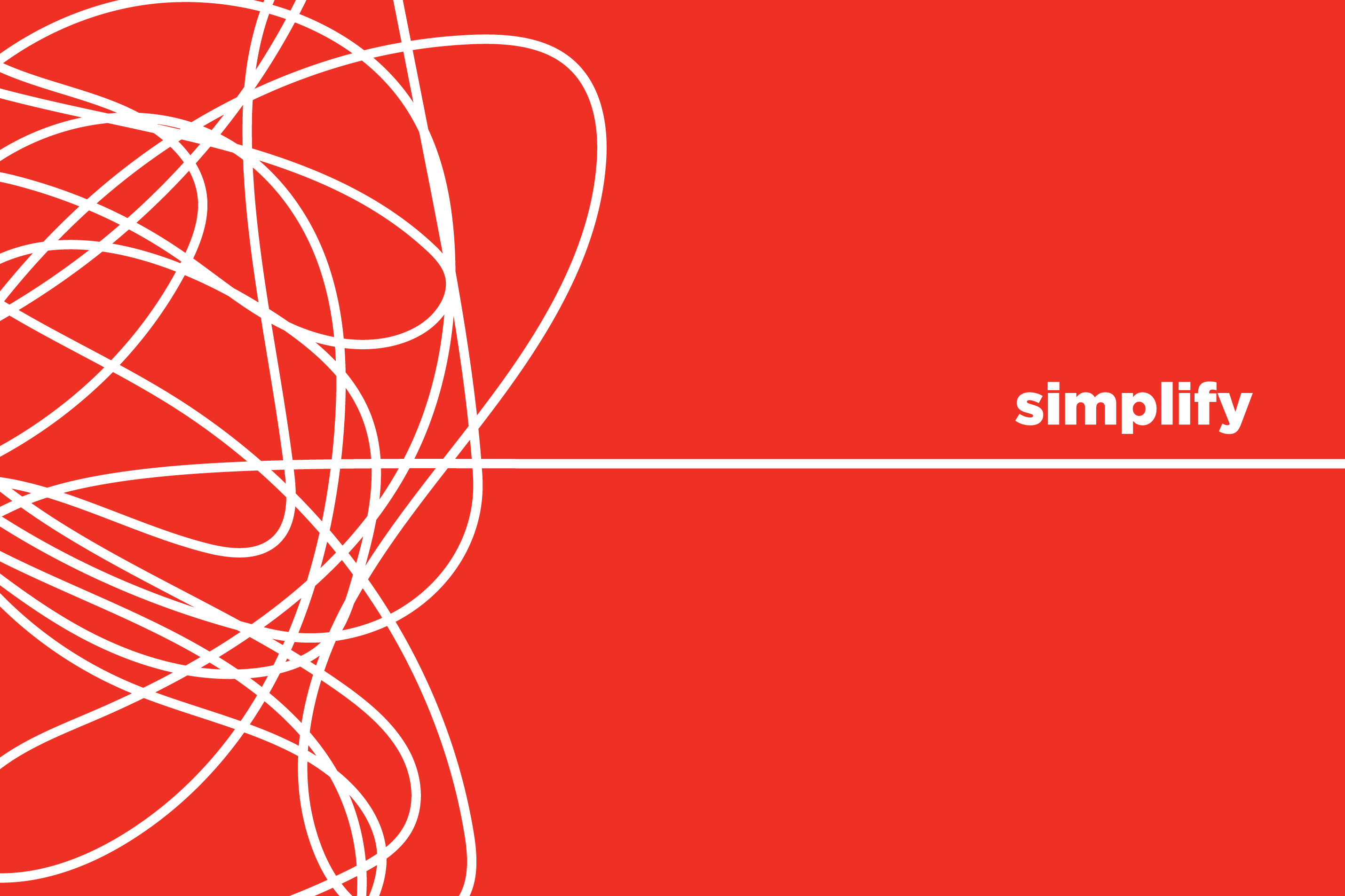
Simplify your brand.
No, seriously.
Look left. Look right. Competitors are launching new products and ad campaigns. Trend cycles are moving faster than your new fiber internet can keep up with. ‘Experts’ are claiming that your company will go extinct if you don’t adopt AI in the next five to seven business days.

As marketers, it’s tempting to worry about what more we can do. How can we expand our target audience? Which additional discounts should we tempt them with? What’s trending, and how can we get involved?
Resist the temptation to add more attributes to your brand. Instead, focus your energy on the core that makes it unique.
So… what is simplicity all about, and what’s wrong with complexity?
When we encourage simplicity, we don’t mean staying off of social media, rejecting innovation or reducing your logo to two colors. All brands have to appear in various formats and channels, even simple ones.
Rather, we view simplicity through the lens of the customer. A great brand is the product of consistency, usefulness, honesty, ease of understanding — all the ways a brand is experienced. Simplicity isn’t about being reductive, it’s about identifying the essence and ensuring that every touchpoint delivers on the brand’s promise to customers.
The alternative — an inconsistent experience — might manifest somewhat innocuously. Sleek copy on the website, but snark on social. Solid, but scattered influencer partnerships. A willingness to release limited-edition flavors on a whim. None of these are inherently negative attributes, but they come with an opportunity cost.
“People put a premium on experiences that are easy to understand; transparent and honest; caring for and meeting their needs; innovative and fresh; and useful. In short, simple.”
This is according to Siegel+Gale, a branding consultancy that conducts an annual index called World’s Simplest Brands. The numbers back that statement up. They found that 57% of consumers are willing to pay more for simpler experiences, and 76% are more likely to recommend a brand that provides simpler experiences and communications. A stock portfolio of their top 10 simplest brands has beaten the global stock index by 1,600% since 2009. Some of the companies that make up the US-based top 10 list are Netflix, Levi’s and Costco.
But aren’t large brands inherently more complex?
Complexity takes over if a brand loses sight of its essence. Large companies might have larger teams, diversified media buys and robust product architecture, but successful brands let their core promise guide their evolution and expansion.
Take, for example, Google, whose business enterprise spans across search, navigation, cloud storage and more. Their self-declared mission — “to organize the world’s information and make it universally accessible and useful” — is at the heart of every new product, advertisement and initiative with the company’s name on it. Simplicity, more than what a brand does, is about the way that it grows, communicates and delivers to consumers.
While dominance in a category can certainly bolster brand image, few large companies have built a brand quite as strong — and simple — as Google’s. Instead of mentioning companies, we can cite industries that tend to deliver complicated experiences at the expense of consumers. Despite being near-universal to consumers, brands in the travel booking and insurance categories are historically overcomplicated and disliked.
If complexity is so detrimental, why is it so hard to keep things simple?
Let’s revisit our role as marketers and the temptation to add, rather than refine. There are a number of reasons for this.
First, we often overestimate the amount of attention that consumers are willing to invest in our communications. This is complimented by the second reason, fear of omission, which leads us to worry if we’re leaving out any information that could possibly drive a purchase.
The business world also has a bias toward complexity, because lengthy text blocks and unnaturally large vocabulary have been viewed as signals of intelligence in the corporate culture of yesteryear. The friend of complexity bias is internal knowledge bias, which leads marketers to overestimate how much their audience knows about their product, causing them to bury the lede and complicate messaging.
As previously addressed, a brand is more than its marketing. Companies grow and stakeholders multiply. A succinctly defined mission is key to maintaining alignment and preventing brand dilution. The most effective brands have a culture of simplicity throughout their company. Everyone has their individual goals and understands how they contribute to the larger goal.
Alright, I want to strive for simplicity. How do I execute?
Fortunately, you don’t have to do more, just more of what matters. That involves reprioritization within a team or organization. Define what makes your brand unique, and identify the current aspects that are stretching its identity too thin.
Instead of using jargon, have the confidence to speak plainly. Ensure that communications are true to the product, because overselling it only creates a dissonance. Instead of trying to make your customers care, make something they care about. Finally, don’t just think of your customers as shoppers; think about them as users, because a brand is a function of experience, not just purchase.
We’ve partnered with First Bank since 1997, through technology changes, recessions, company expansions, and the rise of mobile banking. From their user-centered interfaces, to financial education initiatives, to out-of-this-world charity programs, every touchpoint reflects their core promise of service excellence.
We’re brand builders. Reach out and we’ll help you navigate complex assignments, market dynamics, timelines, and politics. Cutting through the noise is what we do.
After all, simplicity is our superpower.